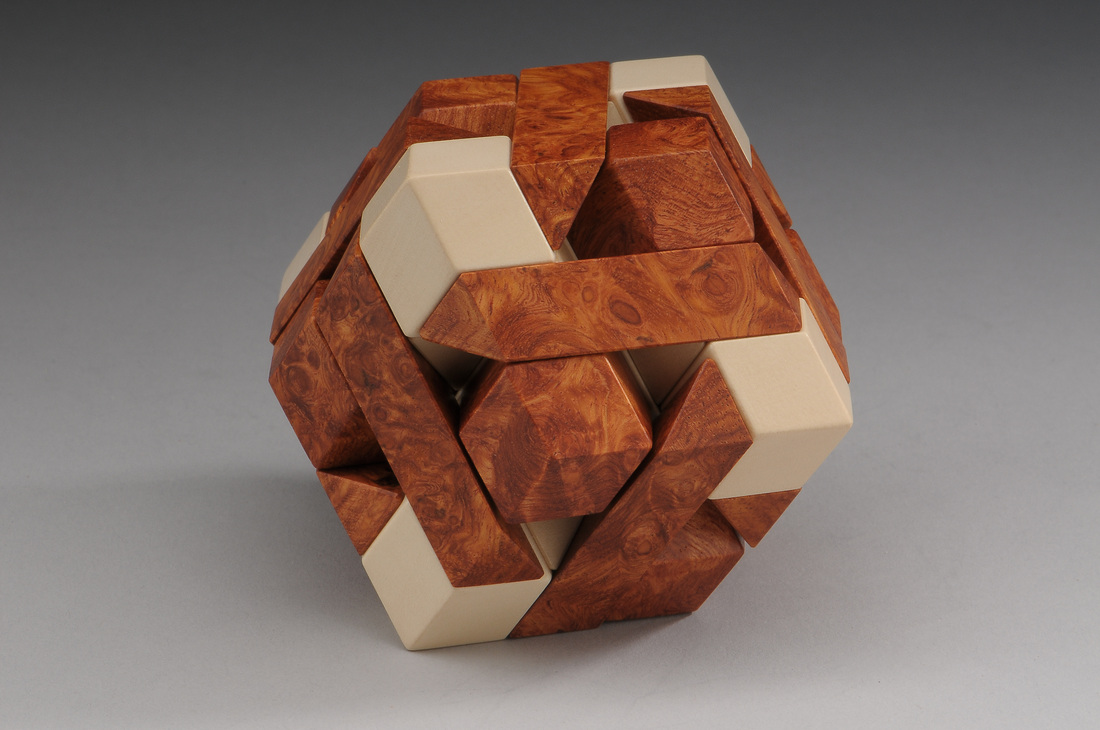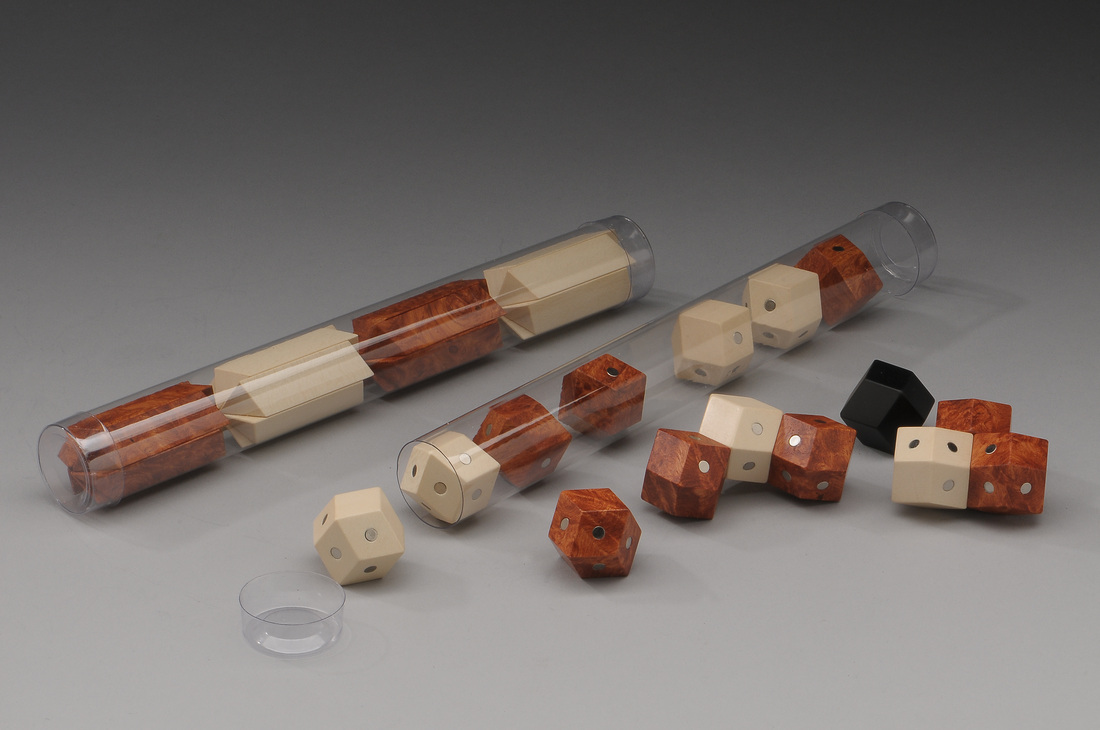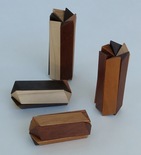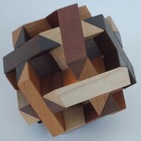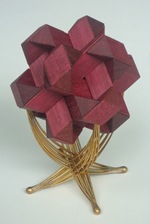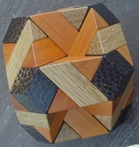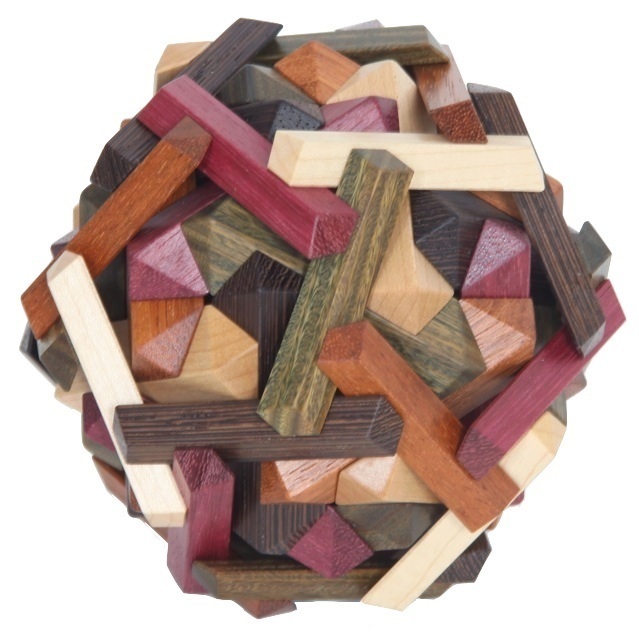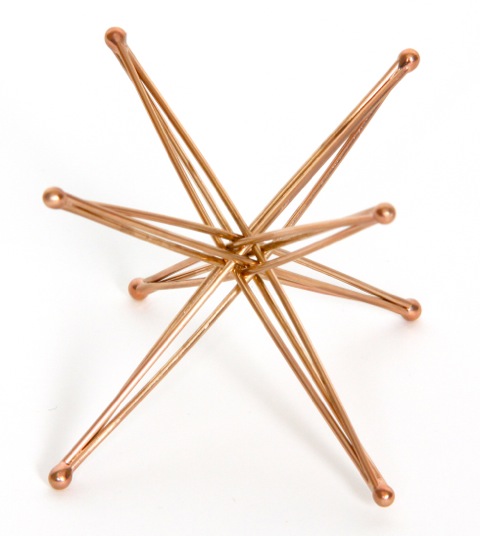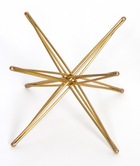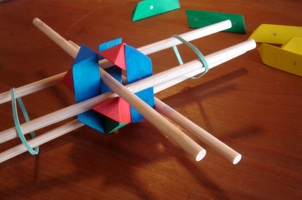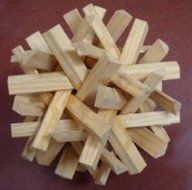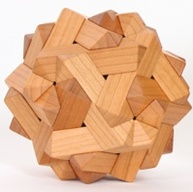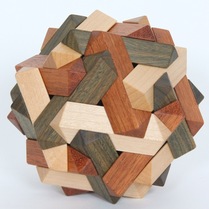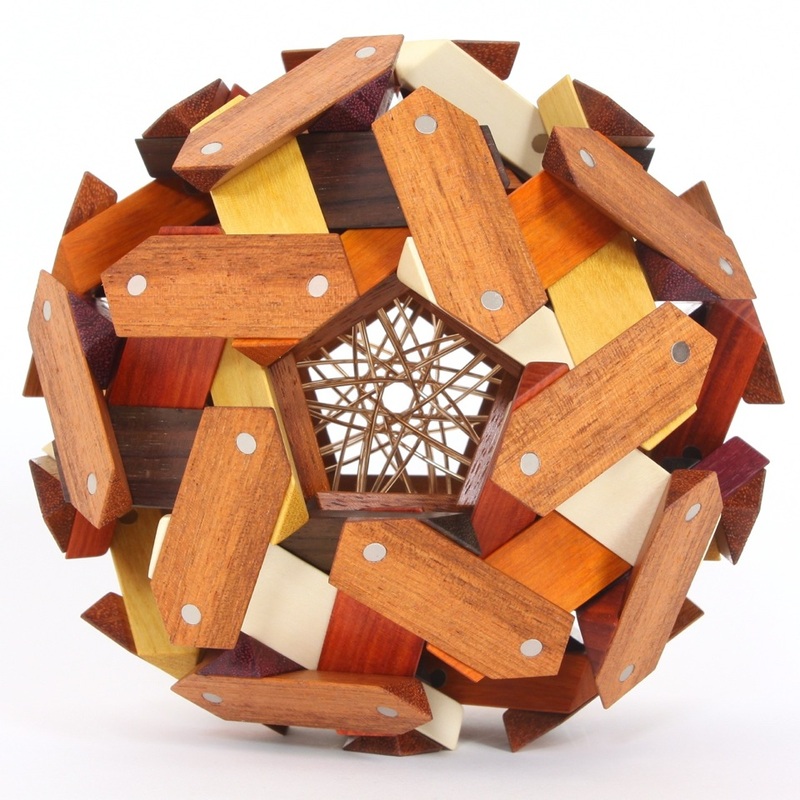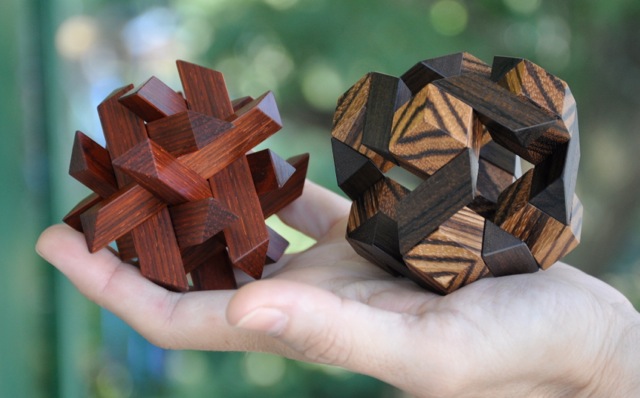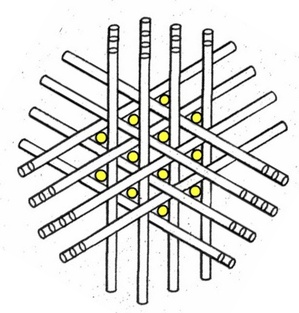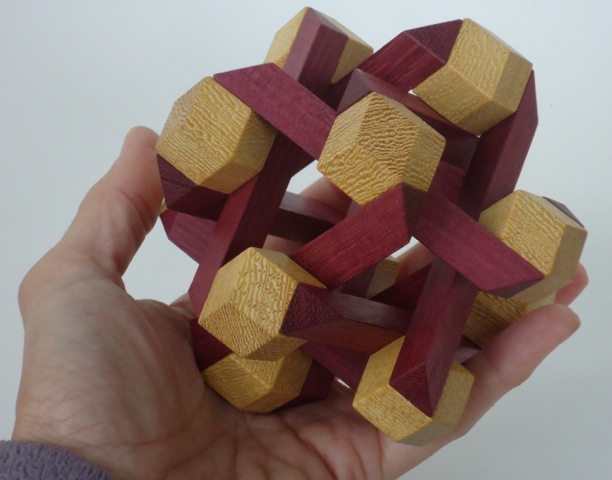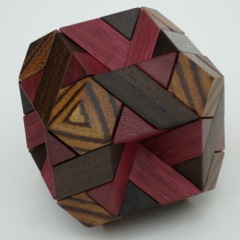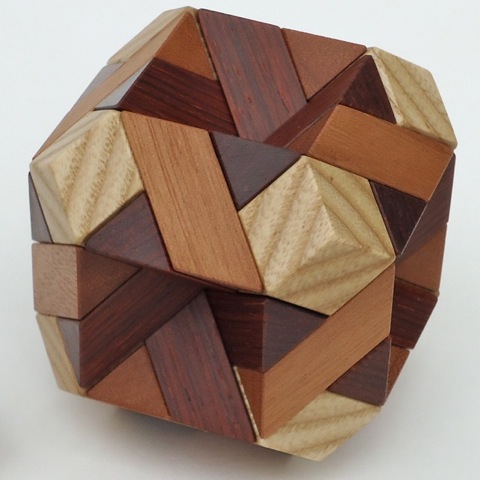Magnetic Assemblies in Wood
|
A good way to see some of these is in action:
Sixteen-Axis Star and Sticks
Tetraxis Star and Sticks
|
|
|
|
Six-Axis Star and Sticks
|
There are so many ways to cut the ends of the sticks.
|
This video can also be viewed on Youtube.
|
To see the relationship between the stars and the stick sculptures, you can view the stars as kind of like skeletons of the wooden compositions, with each wire in a star corresponding to one stick of wood. Each stick is made so that in cross-section it fills out the space it passes through.
Another way this can be illustrated is by working backwards from a wooden version to the wire version. Here each stick is removed and replaced by a dowel.
Looking at the end of a wire or dowel in a Tetraxis Star, you see that the shape of the space it passes through is an equilateral triangle.
|
Shown below in yellow is a 3-axis assembly in the shape of a rhombic triacontahedron that goes together in much the same way. It’s made of six blocks of wood that are sized just right to fit into the center of the wooden 6-axis puzzle. The hollow space inside of that is a cube. Click here for further description of the shape of each block.
|
|
Objects like these, in both 3” and 4” scale, as well as the bronze stars on which their design is based, are available for purchase by contacting us. |
|
Here is another set of sticks that’s analogous to those shown above. This design comes from the 10-axis star, also one John used to make in the 1960s. He calculated the angles of the space each wire passes through, which wasn’t quite as obvious as the others. The two acute angles in the kite-shaped cross-section of this stick are both 60 degrees.
|
|
Just as a 6-axis star can be interleaved with a 10-axis star to make a 16-axis star, the 6-axis sticks and the 10-axis sticks also can be put together to make a 16-axis sculpture. Each of the 60 wooden sticks corresponds to one of the 60 wires in the bronze star. The 10-axis sticks are scaled to fit perfectly around the 4” Six-axis sculpture, which surrounds the bronze star.
|
Here are 90 of the 6-axis sticks connected inside out to completely surround the 10-axis sculpture:
Arrays of Sticks and Blocks
When the round rods are replaced by triangular cross-section sticks, the remaining spaces are shaped like the blocks (rhombic dodecahedrons). Either the sticks or the blocks alone can fill space, meaning an infinite number of each shape can be tightly packed without leaving any gaps between them. Also, together they are space-fillers.
This is very nicely illustrated in a video by Girls' Angle, a math club for girls in Cambridge, Massachusetts.
Countless variations on these designs can be made by moving beyond the single cell that the set of 12 sticks surrounds. It's just a matter of choosing how long to make the sticks, how to cut the ends, which sticks and blocks to include, and where to place the magnets.
This example uses 24 sticks in two lengths:
4P1S
Additional pictures of more designs can be seen on this page and this page, and many more on our Facebook page and Youtube channel.
